

We may earn revenue from the products available on this page and participate in affiliate programs. Learn More ›
Keeping your home in top-notch condition doesn’t mean spending all your free time on maintenance chores; some upkeep and repair projects can be done quickly and without the help (and expense) of a professional. If you have just a few minutes here and there, you can perform the following fast fixes without taking much time away from your daily activities. Stop procrastinating and start getting your home shipshape!
1. Sticking Vinyl Windows
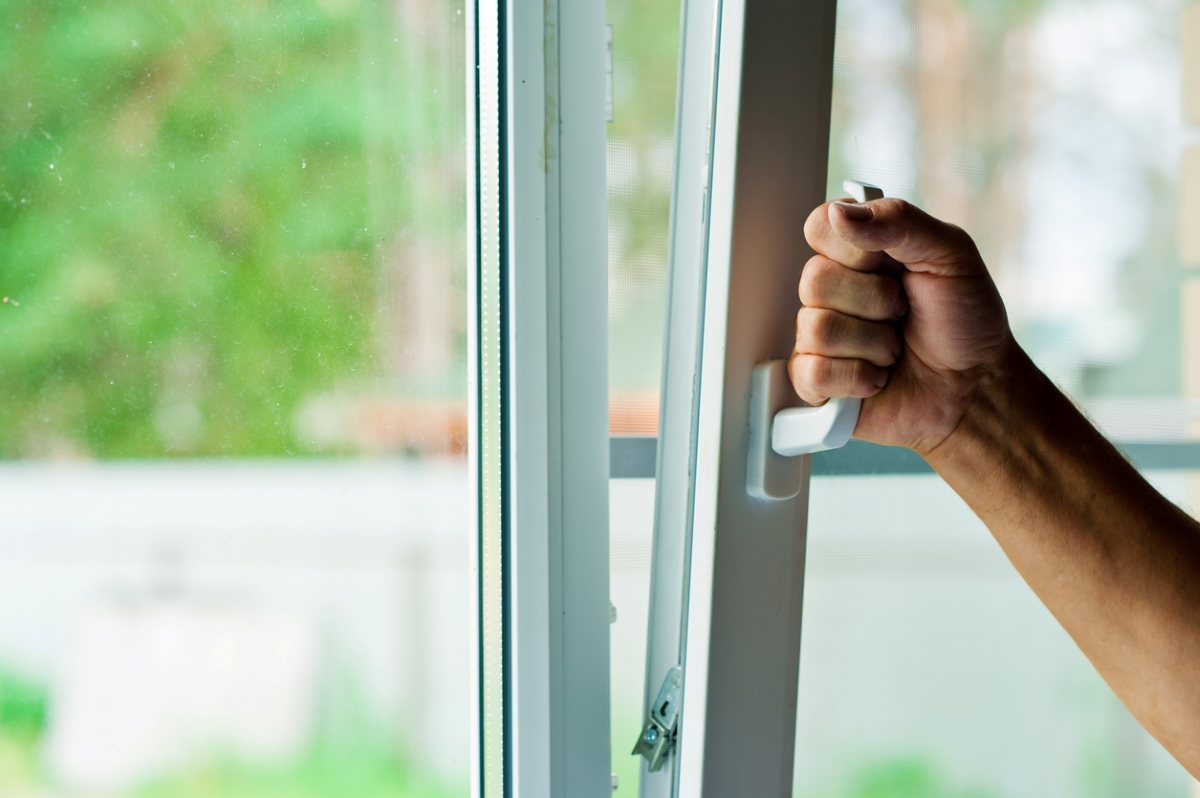
Vinyl windows are affordable, long-lasting, and great at keeping out cold drafts. One downside of vinyl windows, however, is that dirt and grime can accumulate in the window tracks, which can make it difficult to open and close the windows. Banish the gunk and lubricate the window tracks with a little dry-type silicone spray, such as WD-40 Specialist Silicone Lubricant. Point and spray the crevice between the window and the jamb, then open the window and wipe the inside of the track with a clean cloth.
2. Dirty HVAC Filters

Essential Gear
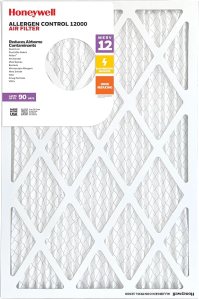
The Honeywell MERV 12 Air Filters offer powerful filtration that captures allergens, dust, and pet dander, helping improve indoor air quality and HVAC efficiency. High-performance filters that are made in the USA—and at a good MERV rating.
An HVAC filter prevents dirt, dust, and allergens from blowing around your house. When it’s not cleaned or changed, the furnace or air conditioner has to work harder to do its job, thus shortening the lifespan of the device and increasing energy costs. Worst of all, it means you and your family are breathing in dirty air. Change the filter every 2 to 3 months (or more often if you have pets or are remodeling) for healthy air quality and energy efficiency.
RELATED: Change Filters Frequently to Optimize Furnace Efficiency
3. Squeaky Wood Floors
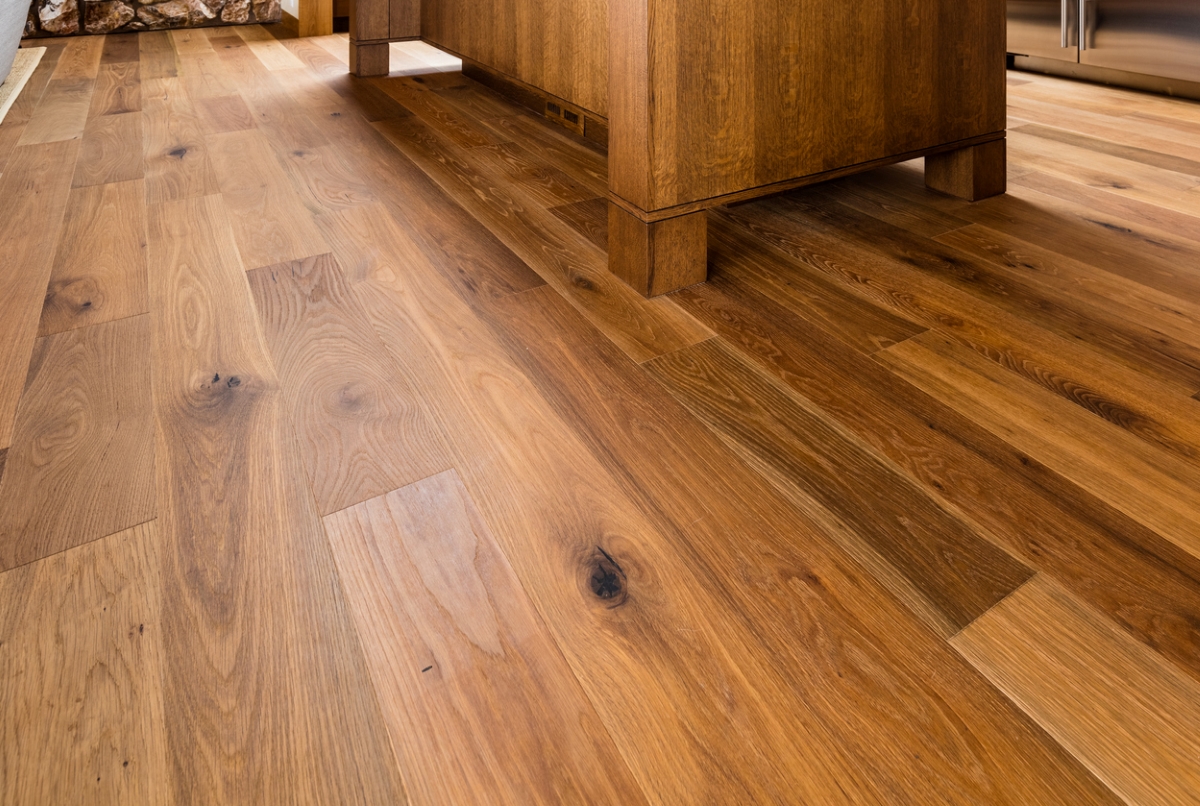
When wood rubs against wood, it squeaks, sometimes quite loudly. If you have hardwood floors, you probably have one or two areas that always squeak when you walk on them. You can silence a noisy wood floor with a little bit of cornstarch. Just sprinkle it over an area that creaks, and then use a broom to sweep it into the cracks between the boards. The cornstarch will act as a dry lubricant between the wood surfaces to quiet the creaking.
RELATED: 5 Ways to Fix Stairs That Squeak
4. Ugly Ceiling Stains

A leaky roof or a dripping pipe can run down and stain the ceiling below. Even after the roof or pipe is repaired, there’s a dirty yellow mark on the ceiling that makes the whole room look dilapidated. If you’re not up for repainting your entire ceiling, there’s a way you can remove (or at least fade) the stain. Repair the leak first, and then fill a spray bottle with household bleach and water, using one-part bleach to five parts water. Spray the stain thoroughly with the solution. Within hours, the stain will fade noticeably—or even completely.
5. Reduced Faucet Flow

Hard water deposits and little bits of debris can clog faucets and affect water flow. You don’t have to replace the faucet, but cleaning the faucet aerator is in order. On the end of the faucet is a tiny aerator screen where debris can become trapped. When the screen is full of debris, the water flow is slow or forced to spray out to one side. The aerator screen can be removed by twisting it to the left. Soak the screen in white vinegar to dissolve hard water deposits overnight and then reattach it.
6. Loose Wallpaper Seams

Wallpaper that wasn’t glued properly during installation has a tendency to come loose at the seams, making the entire wall look shabby, but it takes only a minute to fix. Soften loose paper by spraying the area with hot water, and then squeeze a little seam adhesive, such as Red Devil Wallpaper Repair Adhesive, beneath the loose section. Press the paper firmly back into place, and then wipe away any excess with a damp cloth.
7. Squeaky Doors
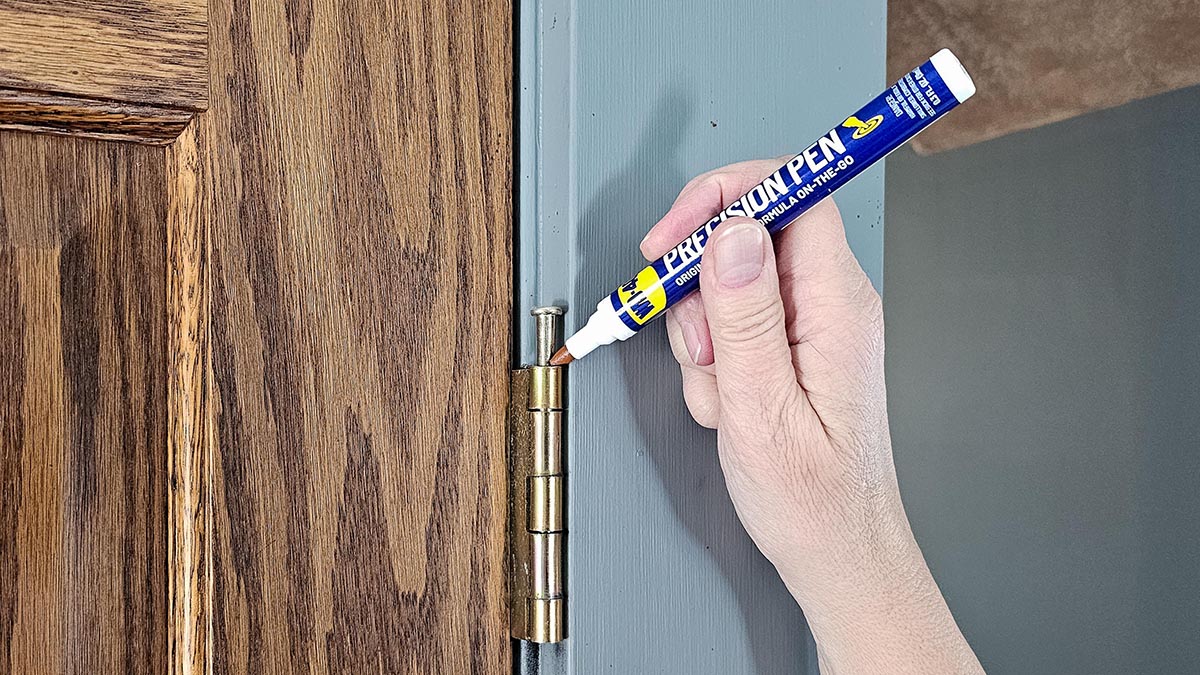
Doors that creak and moan when they’re opened and closed don’t hurt anything, but they sure can be annoying. Silence the squeak with lubricant, such as the WD-40 Precision Pen. Aim the lubricant into the top crease in the hinge and use it sparingly—a tiny bit goes a long way. It’s a good idea to hold a rag or paper towel behind the hinge as you spray to protect the door or jamb from overage.
RELATED: 50 Products for Quick Fixes Around the House
8. Banging Cabinet Doors

If your cabinet doors bang loudly every time you shut them, the problem can be solved instantly by installing bumpers, such as GorillaGrit Cabinet Door Bumpers. Clean the cabinet door to remove gunk or residue, and then position two bumpers on its inside edge, one at about ½-inch from the bottom and another at the same distance from the top. Make sure you attach the peel-and-stick bumpers where the door makes contact with the cabinet base to muffle the sound of the cabinets closing.
9. Unsightly Stains

Hard water can wreak havoc on tubs, showers, and sinks, leaving dark and dingy orange-brown stains that don’t come off with regular household cleaners. If you don’t relish using caustic cleaning products or don’t want to spend hours scrubbing the stains away, here’s a quicker fix: Mix lemon juice and cream of tartar (available in your grocer’s spice or baking aisle) to form a paste, and then apply the paste directly to the stains. Leave the mixture on the stain for an hour and then rinse away to reveal a sparkling clean fixture.
10. Drafty Doors

An exterior door that doesn’t seal tightly when closed lets in cold drafts, which can result in increased heating bills. Stopping drafts is a simple fix that requires removing the old weatherstripping (just pull and scrape it off) and then installing new peel-and-stick weatherstripping. Opt for a weatherstripping kit, such as the WIGTDA Door Insulating Kit, which comes with a bottom door seal in addition to regular weatherstripping for an airtight seal.
RELATED: Drafty Windows? Try These 12 Solutions for Every Budget
11. Sticking Door Lock
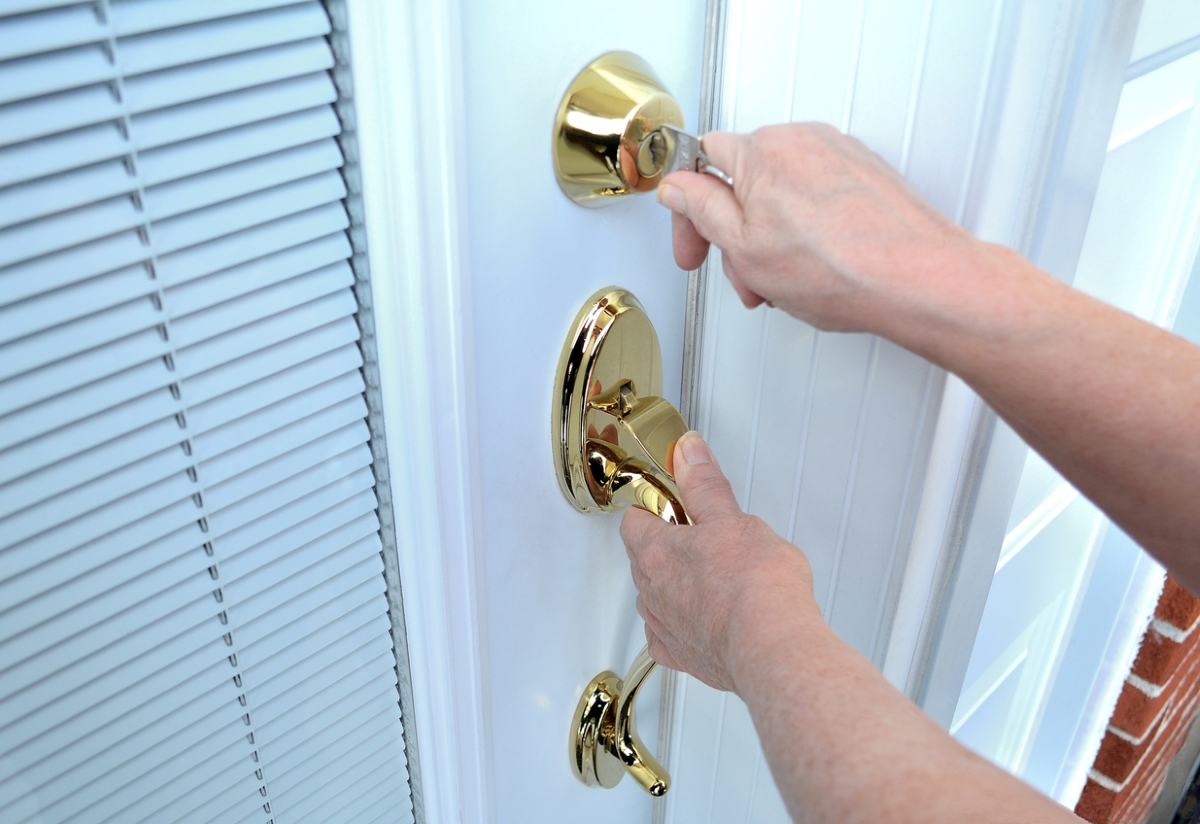
Do you have to jiggle, coax, or turn the key forcefully to unlock your door? Corrosion and dirt buildup can make it difficult to use a key in a door lock—but if you’re experiencing problems, wait before you run out to replace a tricky lock. Try rubbing the cuts on the key with the lead of a graphite pencil, or squirt a little powdered graphite, such as AGS Powdered Graphite into the opening in the lock. The graphite works to lubricate the tumblers in the lock so your key will turn with ease.
RELATED: 5 Fixes for a Stuck Key
12. Sticky Wooden Drawers
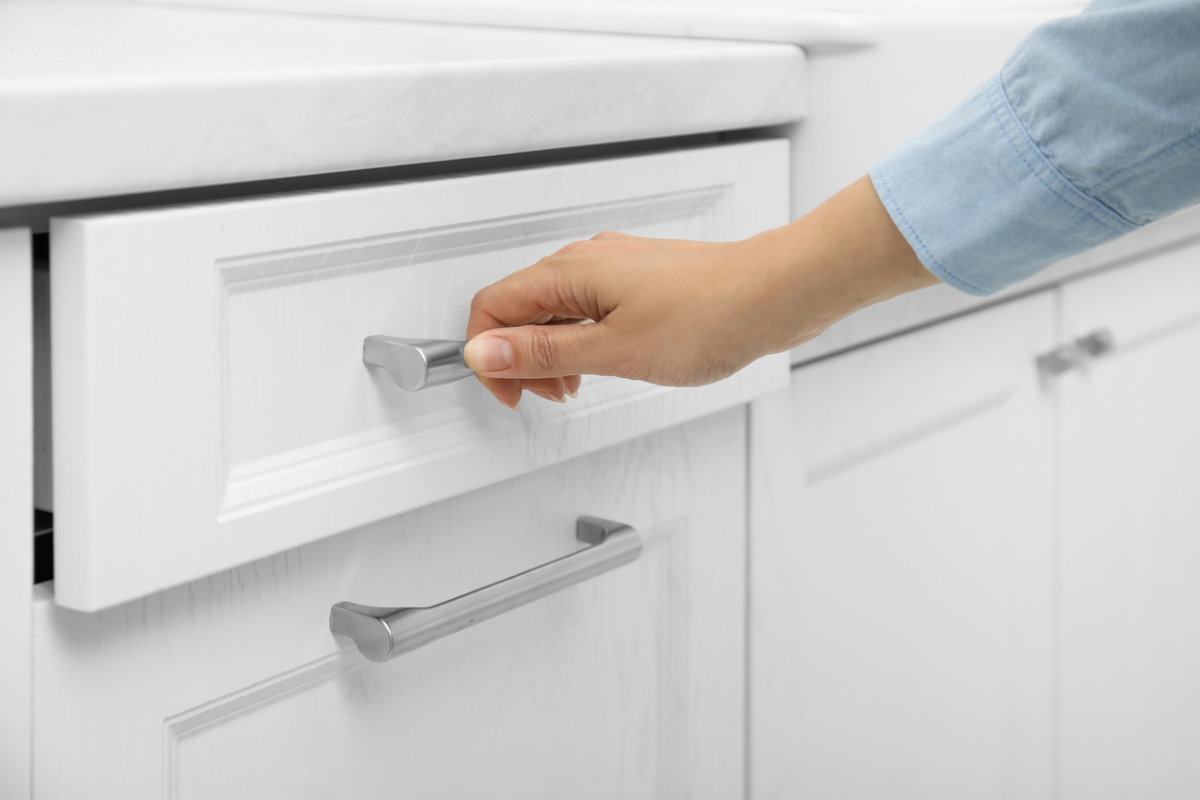
Over time, wooden drawers can begin to stick, making it difficult to open and close them, but you don’t have to live with sticky drawer syndrome. To help the drawer slide smoothly again, remove it from the cabinet and turn it over so you have access to the underside. Rub a bar of paraffin (or located in your grocer’s canning aisle) along the both bottom edges of the drawer. The paraffin will lubricate the drawer and help it slide smoothly.
13. Mold in the Washing Machine

If your clothes come out of the washer smelling musty instead of clean, you probably have a bit of mildew in your washer. Fortunately, banishing the mildew is a quick and simple project. Put 1 cup of baking soda in the washer, and run one empty load on the hottest water setting. The baking soda will clean and remove all mildew growth so you can have fresh-smelling laundry again.
RELATED: 14 Surprising Places Where Mold Hides in the Home
14. Wobbly Shower Head
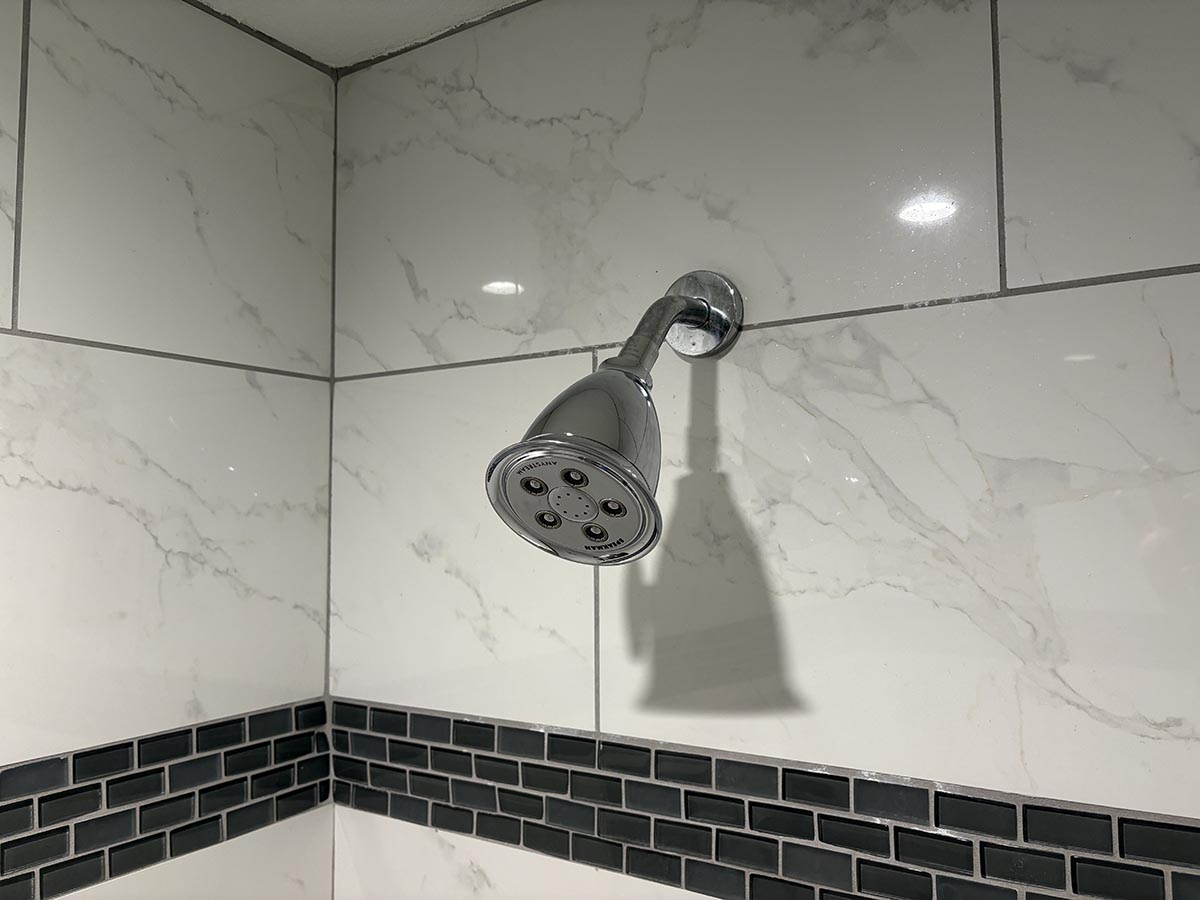
A shower head can begin to wobble when the pipe in the wall loosens over time—but stabilizing the pipe and steadying the shower head is a snap! Slide the shower head trim ring away from the wall (you may need a screwdriver) to reveal the base of the pipe and the hole beneath. Spray a bit of low-expanding foam into the hole underneath the pipe, using the straw that comes with the can or a spray foam gun that may need to be purchased separately. Create a little “cradle” beneath the pipe to support and stabilize it.
RELATED: How to Fix a Leaking Shower Head
15. Outdated Bulbs

Chances are the only time you think about the lights in your house is when one goes out and it needs to be replaced. However, you might want to reconsider this if you’re still using outdated bulbs. Swap out incandescent, fluorescent, or halogen bulbs for LED bulbs. These newer versions are more energy efficient and longer lasting. On top of that benefit, some versions include handy features that can connect to your phone or home device, like the GE LED+ bluetooth speaker light bulb, which is a bulb with a built-in speaker.
RELATED: How to Make Your House a Smart Home In Just 8 Steps—And The Best Devices to Buy First
16. Tile Gaps

Over the years, your house is going to show signs of aging and settling, such as spaces popping up between the tiles in your bathroom. In addition to being aesthetically unappealing, it also provides a spot for mold and mildew to grow. Luckily, there’s no need to rip out all the tile to fix it. Clean and dry the crack, and then grab the caulk gun and fill the spaces in with waterproof siliconized acrylic caulk.
RELATED: 15 Problems Around the House That You Can Solve With Caulk
17. Worn Fridge Seals

If the magnetic seals on your refrigerator door aren’t sealing tightly, air can leak into the fridge, which forces the appliance to work overtime and shortens its useful life. Fortunately, replacing the seals is a super-quick DIY project. You’ll need a screwdriver to remove the metal strip that holds the old seal in place (look under the lip of the seal). Replacement seals can then be attached in the reverse manner. Contact your appliance manufacturer for details on how to repair faulty refrigerator seals.
RELATED: What to Do When Your Refrigerator Is Not Cooling
18. Uncertain Detector Status

Checking the batteries in the smoke detectors and carbon monoxide detectors is one of the easiest and most important tasks you can check off your maintenance list. Go around the house and check each one to make sure they’re all in working order. If any of the alarms do need fresh batteries, change them immediately—you never know when you’re going to need your alarms to work for you.
19. Overflowing Gutters
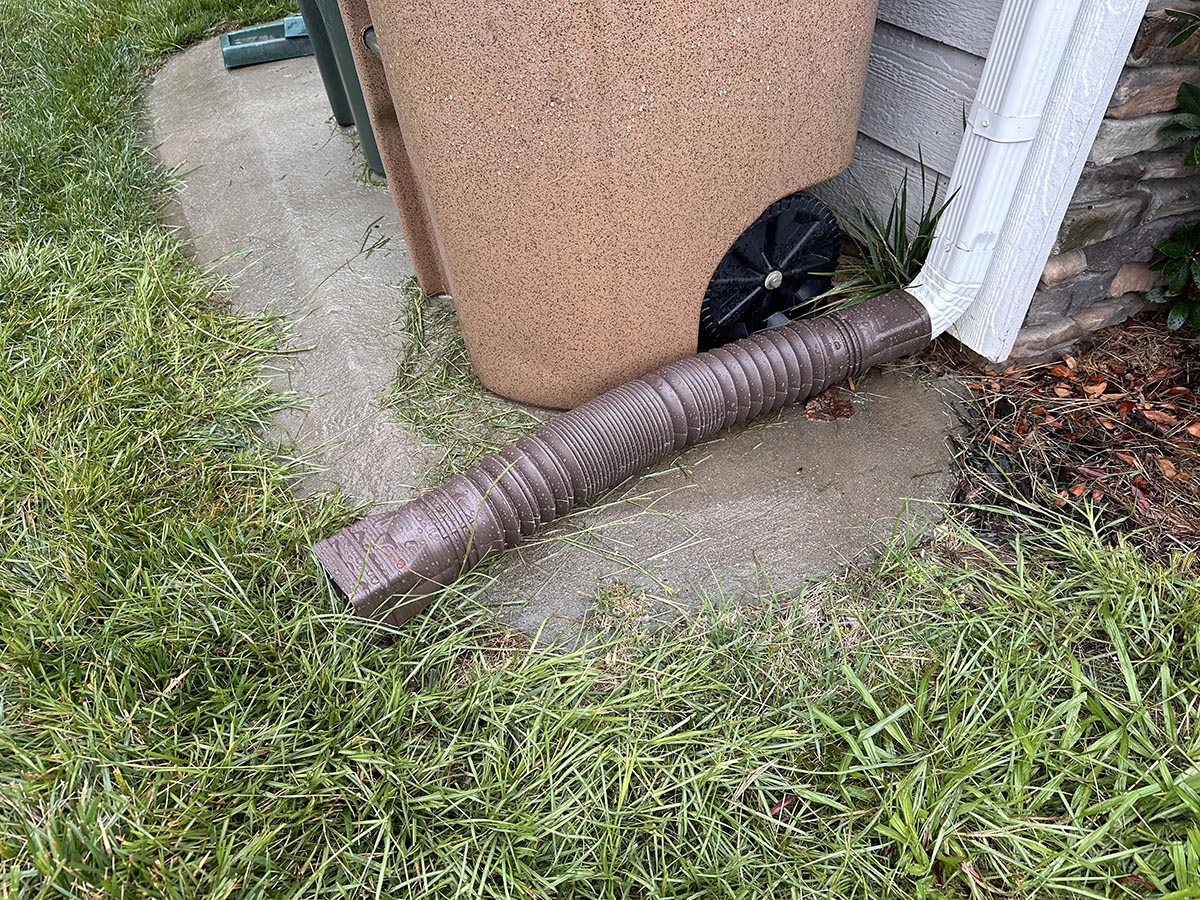
Don’t allow water streaming from the gutter or roof to pool around your home’s foundation. Water that is left around the base of your house can seep into the basement causing leaks or swelling the soil that can build pressure and create cracks in the foundation. Prevent these kinds of disasters by adding downspout extensions to allow rainwater to run off away from the house. They’re affordable and simple to install.
RELATED: How to Clean Gutters: 5 Effective Ways to Get the Job Done
20. Scratches in Wood Flooring
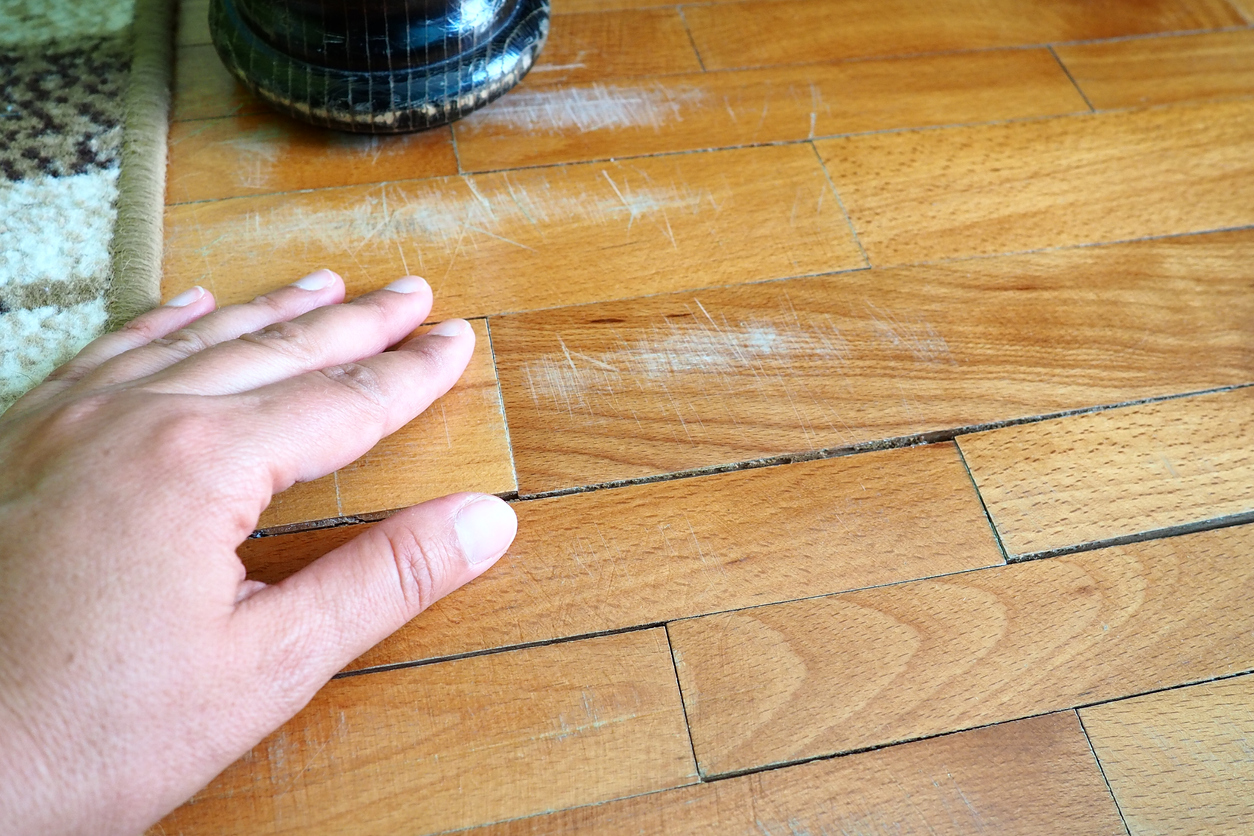
If you’ve noticed scratches in your hardwood flooring, you might not need to hire a contractor to replace the boards. Scratches that are small can be filled with a matching stain that’s carefully applied with an art brush or cotton swab. Make sure to test the stain first to see if it will be a good match. When in doubt, choose a light color. It’s easier to darken a color than to lighten one.
21. Dents in Carpeting

Moving furniture around a room can make a space seem fresh and new, except for the carpet. The legs of furniture make dents in carpeting and rugs over time, and those little divots are reminders of the old configuration of the room. An easy fix is to melt an ice cube in the dents. After the ice is melted, rub the area to loosen up the pile and restore the pile to its original height.
22. Marks on Appliances

Whether you bought a scratch-and-dent appliance for an amazing deal or your family helped make the marks on appliances around the house, they can be fixed with special paint. Don’t try to use the same can of paint that you used on your baseboards; the paint made for appliances is a little different. A product worth researching for this task is Rust-Oleum appliance touch-up paint.
23. Clean Humidifiers
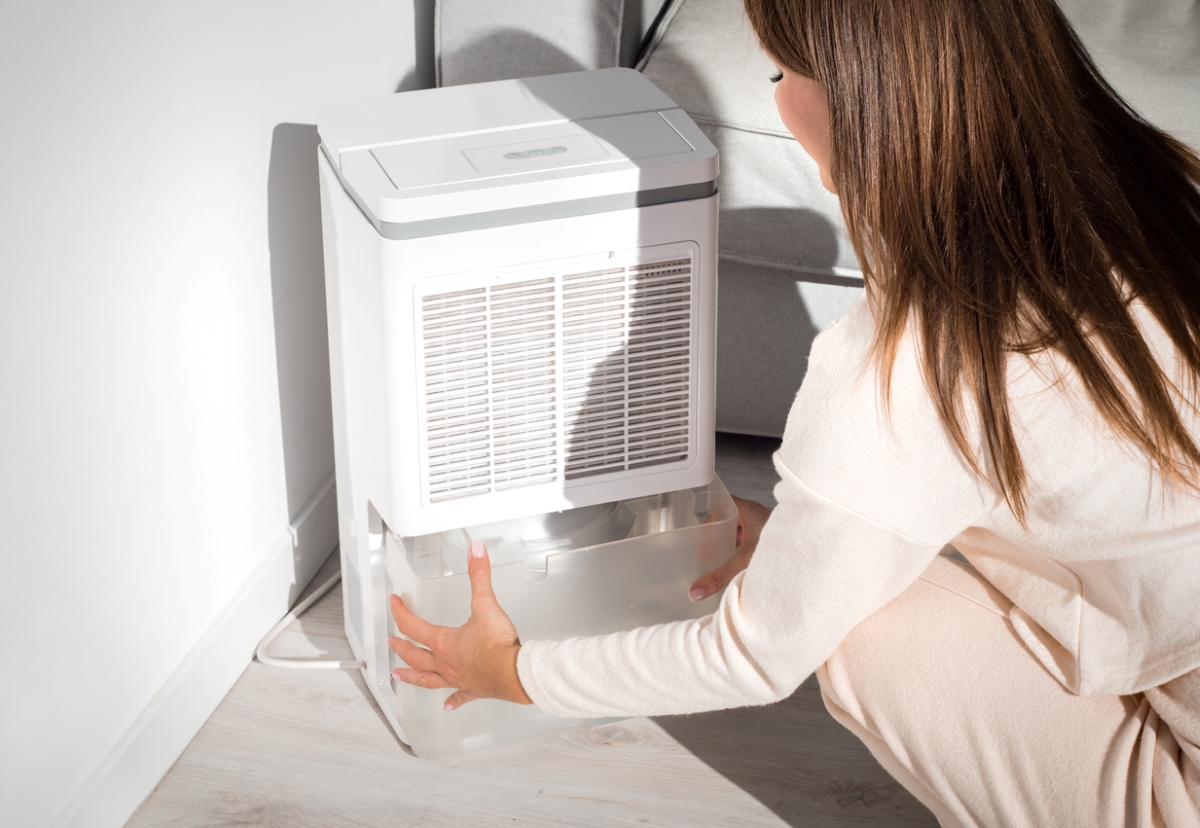
Allergy and asthma sufferers rely on humidifiers to keep the air moist. However, humidifiers can be hotbeds of mold and goo if they aren’t cleaned and emptied regularly. Make sure to empty the humidifier weekly, and soak the non-electrical parts in a white vinegar-water solution monthly.
RELATED: How to Clean a Humidifier
24. Dim Lighting
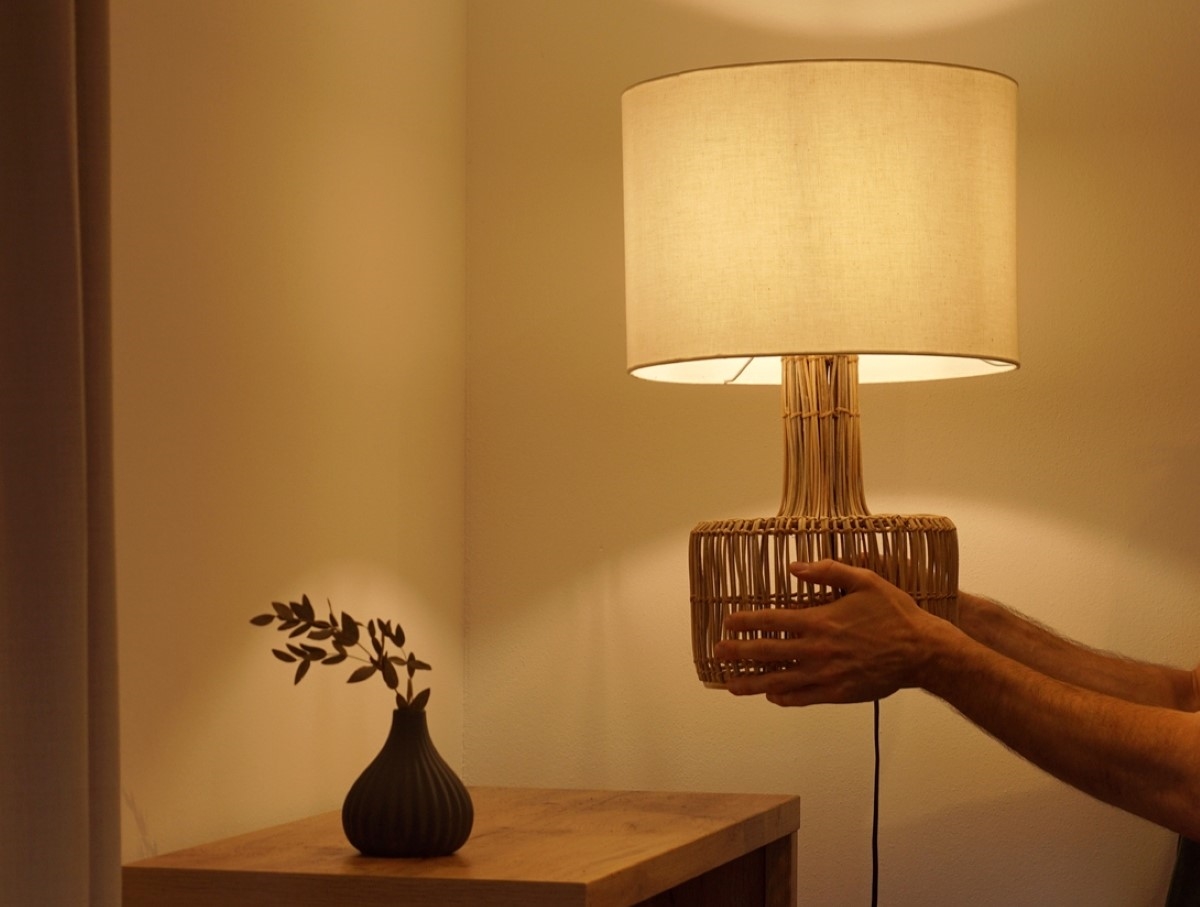
Light and color can have a major impact on how a room feels. It’s helpful to match them with the activities that happen in the room. For example, a cooler light temperature is more fitting in a number-crunching home office than in a primary bedroom. Change the light bulbs to a color temperature that matches the ideal mood of each space.
25. Smelly Garbage Disposals

Garbage disposals can start to stink after a lot of use or after just one stinky mess. Battle the odor with fresh appeal: Drop a few orange or lemon peels down the drain and then start the disposal. It may take a few rounds to get rid of the unpleasant scent.
